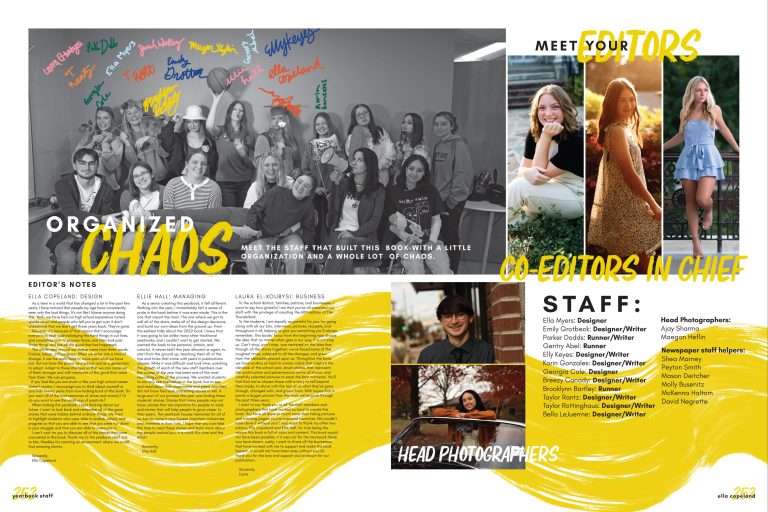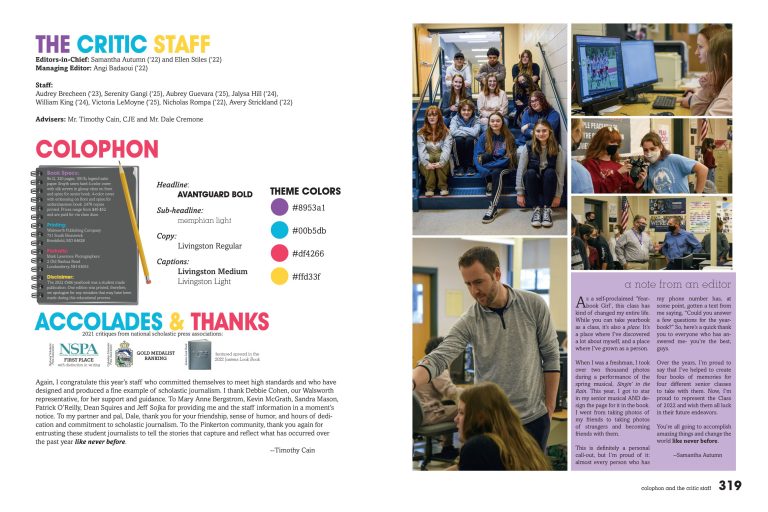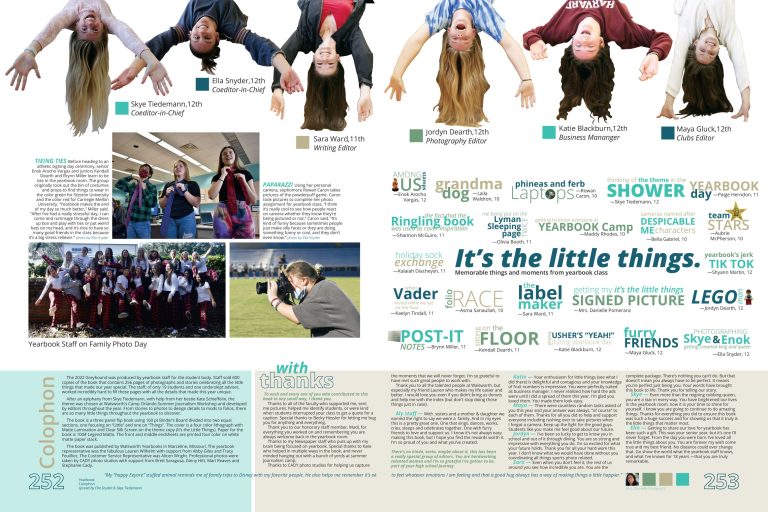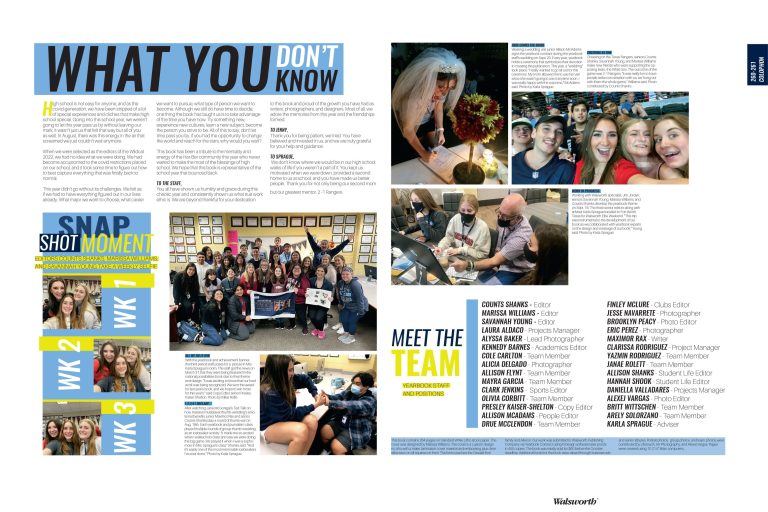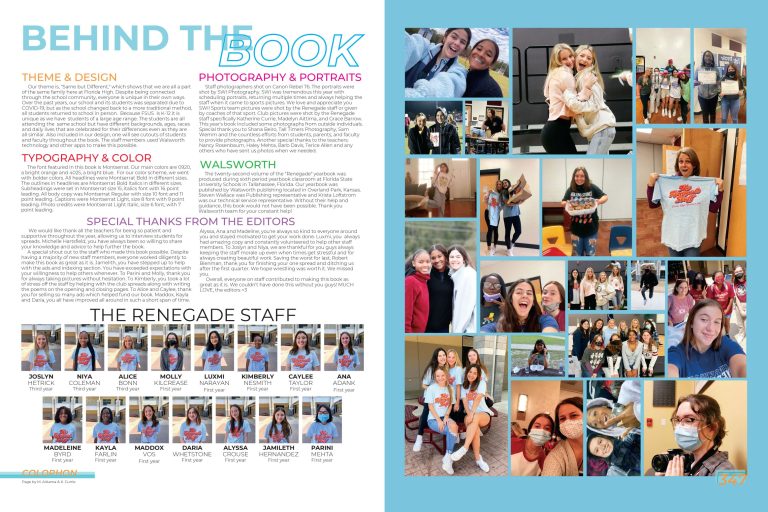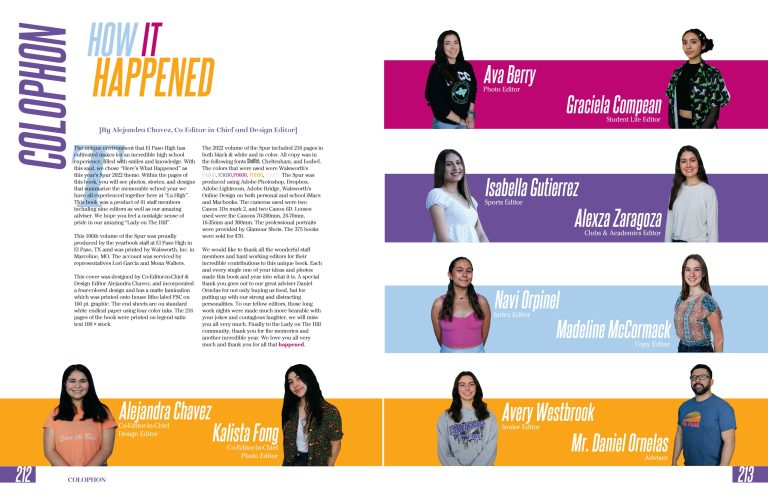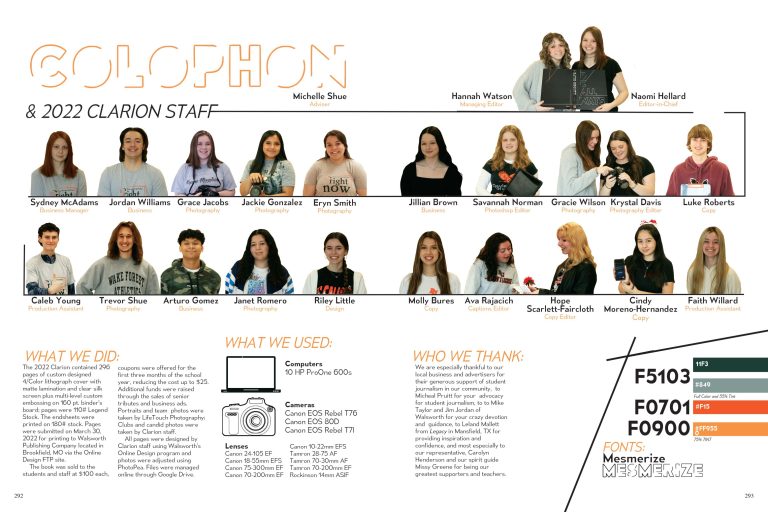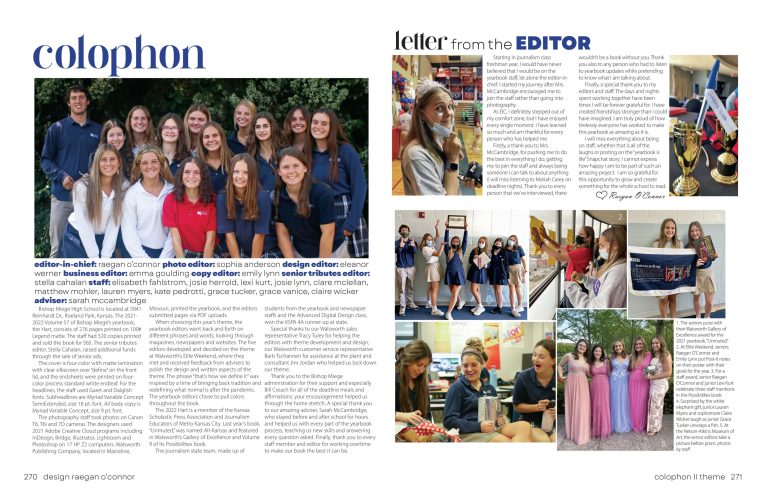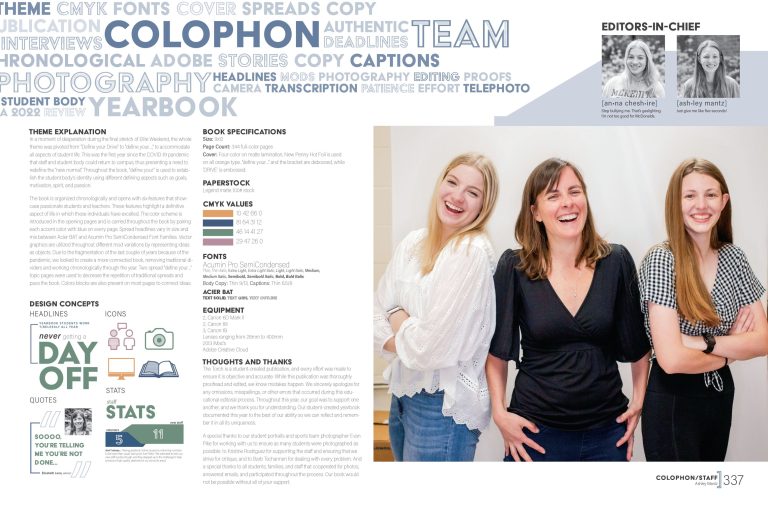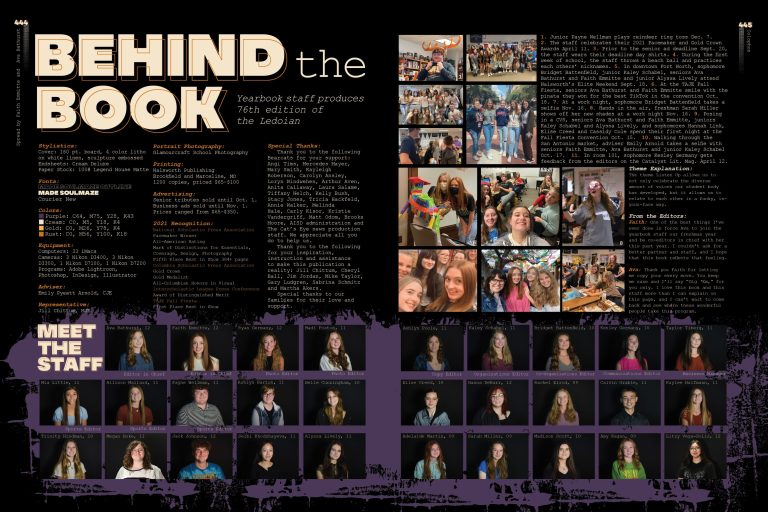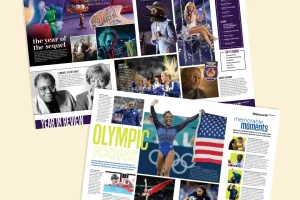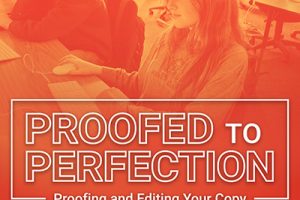
A Step-by-Step Guide to Writing a Yearbook Colophon
Updated by Walsworth Yearbooks
You’d be surprised how often it happens. You pick up a yearbook, see a cover design you really love or flip through and eye a font you like, then flip to the back looking for the yearbook colophon to read the specs and… nothing. Many yearbook teams become overwhelmed with the pressure of delivering pages on time, they ignore the importance of a yearbook colophon, or they lack knowledge on what information it should contain. Some simply do not know what a colophon is (don’t worry, your secret is safe with us). Consequently, this step gets omitted.
Some yearbook advisers have specific reasons they believe colophons are important and details they like to include in them. However, do not make the error of overlooking the importance of including a colophon in the book, as your yearbook staff should consider it a necessary part.
Here is a list to assist you with the necessary parts of your yearbook colophon.
The basics
First things first, a colophon typically goes in the back of your yearbook, most often either right before or right after the index. Start your colophon by covering all of the basics. These are the facts that shouldn’t require much, if any, research to compile, including:
- Your book name, volume number and school year
- Number of pages
- Price charged for the book
- Who was responsible for producing the book – yearbook class or club, how many students were involved
- The yearbook staff’s names and titles, especially who the adviser and editor(s)-in-chief were
- What scholastic journalism organizations the yearbook staff belongs to (NSPA? CSPA? Any local state organizations?)
- Your yearbook’s theme, possibly with a brief theme explanation
- Your staff’s editorial philosophy and advertising policy
Printing information
A primary purpose of a colophon is to inform readers how your yearbook was printed and what it included. So it needs to have the following:
- The name and location of the printing company
- The number of copies printed
- The type of paper used
- Details about the book cover design, including the designer and specifications or materials used for the cover and endsheets
- Any special book specifications, such as UV coating or augmented reality
- The use of current events, spring coverage or autograph supplements
- A citation giving credit to any stock photos used or purchased, or materials from external sources, such as local photographers or writers.
If you are unsure about the details of your book, be sure to reach out to your sales rep for assistance.
Really get into the details
You should outline the intricate details and specs of how the yearbook was created. These types of details can include:
- Fonts
- Colors
- Computers and software utilized
- Camera Equipment
Time to recognize
Some staffs use the colophon as the place where they offer acknowledgments and give thanks to all those who helped them along the way throughout the year. That means:
- Offering thanks to the publishing company sales rep, customer service rep or any teachers who provided support to the yearbook program
- Listing of any awards the yearbook program earned during the year or accolades for the previous edition of the book handed out during the year
Include the contact information for readers who have questions or concerns in your colophon. The staff often enhances the colophon by adding a thank-you letter from the editor-in-chief, staff photos, and packaging it all in a visually appealing yearbook staff spread.
Take the time to create a colophon. Despite the busy schedule during yearbook production, this task is crucial.
Invest your valuable time and effort into your yearbook. More readers than you anticipate will show interest in the details of your publication and want to meet the team behind its creation.
Do you include a colophon in your yearbook? What essential elements do you always include? Find inspiration in our gallery, download some examples and share your thoughts by leaving a comment.
Tag:Colophon

